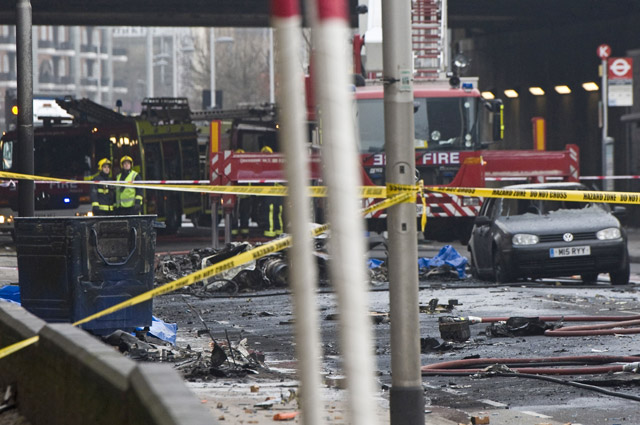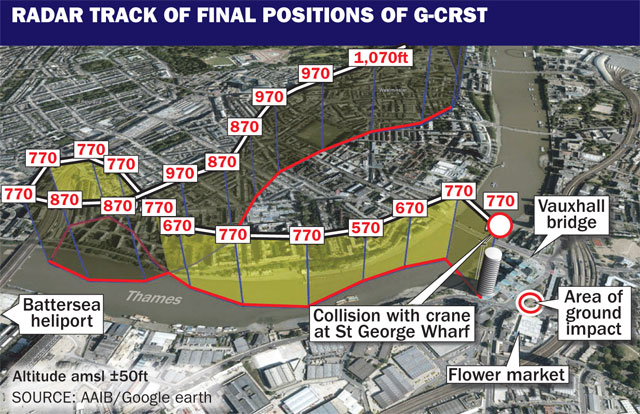A helicopter pilot died because the AgustaWestland AW109E he was flying hit a crane on a building under construction beside the river Thames in London while it was partially obscured by cloud, according to the UK Air Accidents Investigation Branch.
The AAIB report also concludes the designated helicopter route above the river at that point had been rendered non-viable under certain circumstances by the construction of this building and another facing it across the river, but that none of the authorities appeared to have noticed this.
A contributory factor to the cause of the 16 January 2013 crash was that the pilot, flying under visual flight rules, was “unable to stay clear of cloud” while attempting to position for a landing at London’s Battersea heliport. The pilot was the only person in the helicopter, but a pedestrian in the street at Vauxhall was killed by the crashing aircraft.

Rex Features
The AAIB also makes numerous recommendations aimed at ensuring there will be a better system of compulsory communications between local authority planning offices, building developers, the UK Civil Aviation Authority and air navigation service providers when high buildings are planned. The helicopter hit the crane at about 770ft above ground level. The existence of the building and crane was publicised by notices to airmen, the AAIB confirms, and it was lit with red lights, but the pilot either did not see it or failed to see it until too late.

The report observes that the building under construction at St George’s Wharf, on which the crane was mounted, is close to the south bank of the Thames. Facing it across the river is another high building. The two buildings make it almost impossible for helicopters to abide by the rules for minimum height and legal obstacle clearance while flying along the Thames under a low cloud base. The Thames is a designated helicopter route, yet this fact appears to have gone unnoticed.
Battersea heliport was not the flight’s original destination. The pilot, who took off from Redhill airport to the south of London heading to pick up a client at Elstree aerodome to the north, failed to land at Elstree because of freezing fog there. While returning to Redhill he made a decision to divert into Battersea. Just before the helicopter hit the crane the pilot was over the Thames near Vauxhall bridge, heading northeast. He then initiated the fatal right turn through 180˚ to head for the heliport.
The AAIB urges the CAA and EASA to study the US Federal Aviation Administration's FAR Part 135-615 and 617, requiring pilots of VFR flights to carry out a pre-flight risk assessment.
Source: FlightGlobal.com



















